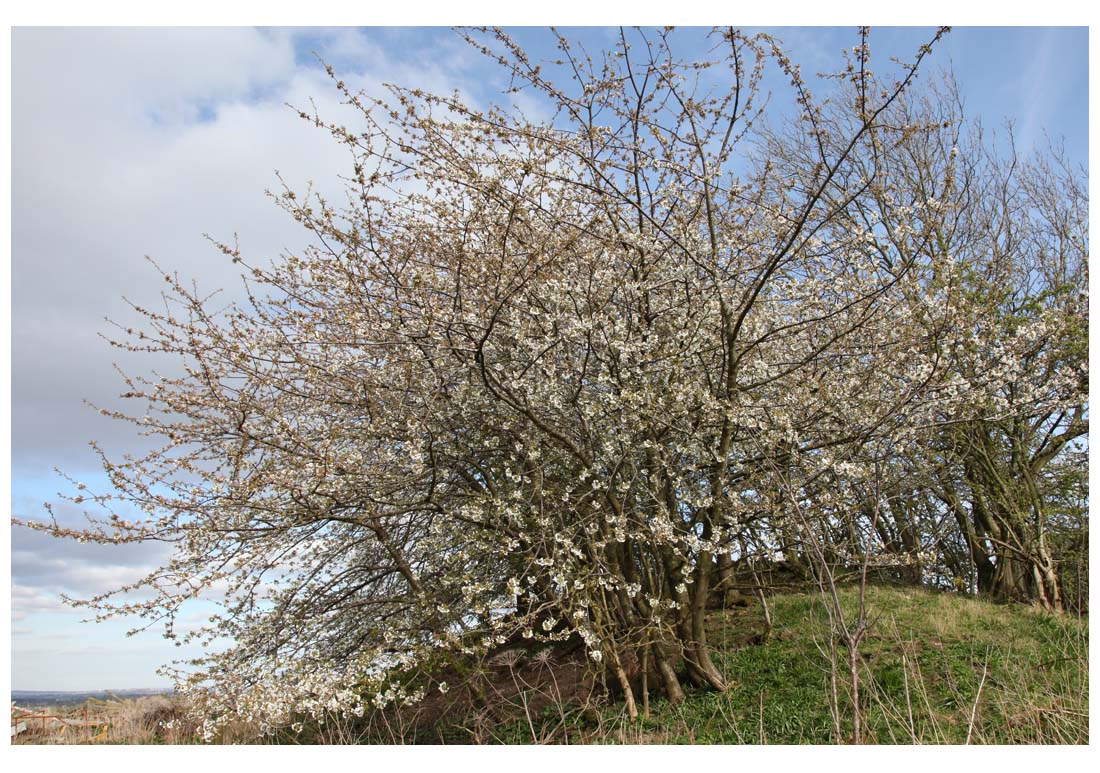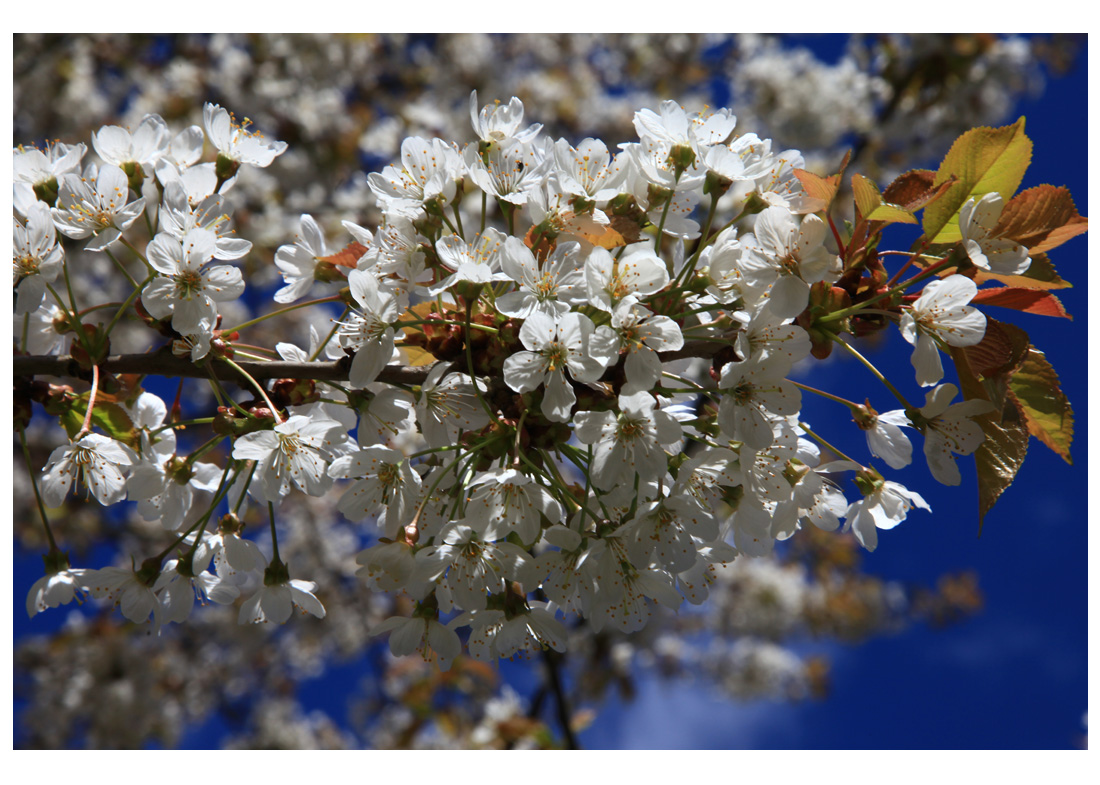The wild cherry, also known as gean, Prunus avium is the second of the croplands’ wild cherries to flower. Like many wild trees, grown from seed, individuals differ in their tendency to be vegetative or reproductive. Some trees hardly flower while others cover themselves in a spectacular mass of white in late April and early May.

The gean can be cut into a hedge but more often appears as a small to medium tree, a strong trunk supporting a few main branches, off which emerge secondary branches almost at 90-degrees in some specimens. The best wild cherries are in tree lines or copses in unmanicured farmland. The one shown above, straggling a stony mound, was on the margin between arable and upland grazing. It looks as if the present tree might be supported by several ‘stems’ that grew around an old dead or cut trunk.

The cherries themselves are small and sour, a flavouring for alcoholic drinks, while the timber is strong, the gum is said to be ‘an old medicine … recommended for coughs’ (Grigson) and ‘the roots dye purple-red’ (Darwin T).
Unlike the blackthorn, the first to bloom, whose flowers are spattered all over the tangle of branches, the gean holds its flowers in clusters on straight branches, usually just trunk-wards of an expanding cluster of leaves. The sepals, that split and bend back to allow the white petals to unfurl, are reddish (see image above) whereas they are green in the blackthorn.
The wild cherry is increasingly common now as a result of plantings after road construction. Some of these trees look a bit too lush for a wild cherry.

